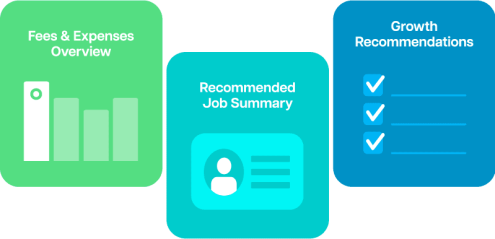Simplifying the Shopping Experience with One-Click Ordering
Terrence Roice Ignacio
on
April 25, 2025
Integrating one-click ordering into their platforms can help e-commerce businesses further simplify the way they process orders. By removing unnecessary steps in the purchase journey, businesses can deliver a smoother and faster checkout process. Convenience has always been a key factor in driving sales and improving the customer’s experience in e-commerce platforms.
Incorporating one-click ordering can create a smoother and more intuitive shopping experience for customers. The many benefits include:
- Reduces friction at the point of purchase
- Increases customer satisfaction
- Boosts customer conversion rates
- Reduces cart abandonment
- Encourages repeat purchase
This blog will explore the power of one-click ordering in the customer’s purchasing decision and business. We’ll examine the benefits for both consumers and businesses, along with real-world examples of how companies are using this technology to drive success.
Understanding One-Click Ordering

Using a one-click ordering feature allows customers to complete a purchase with just a single click. This makes the entire ordering process faster and more efficient by saving all necessary information, such as payment details, shipping addresses, and order preferences, in advance to be used when customers are ready to order.
Amazon popularised one-click ordering, patenting the system in 1999, after a 1997 application. They sued Barnes & Noble for infringement in 1999, settling in 2002. With Amazon’s patent expiring in 2017, the feature became widely adopted by online retailers.
The core concept behind the feature is simplicity. Instead of manually filling out forms and reviewing details at every step, customers can speed through the process without unnecessary delays.
The Benefits of One-Click Ordering to Consumers

Customers are becoming more time-sensitive and digitally savvy, driving a growing demand for quick and seamless transactions. Today’s consumers are naturally drawn to experiences that save time and minimise effort. Aside from time saving and effort minimisation, below are the other benefits to consumers:
Speed and Convenience
Customers can complete a purchase instantly without needing to type or input credit card numbers, shipping details, or double-check order forms. This would make a huge difference for repeat buyers who value efficiency and want to skip the checkout process altogether.
Fewer Barriers to Purchase
One-click ordering can skip the long and complex paths to purchase. This barrier can result in customers being likely to abandon their carts. This allows for a lesser effort needed to complete a purchase, especially on mobile devices where lengthy forms can be complicated.
Improved User Experience
The feature is particularly helpful for people with busy lifestyles or those who frequently shop online, saving them time and providing a feeling of control and ease.
The Benefits of One-Click Ordering to Businesses

It might seem like it’s absurd and has no impact on the business, but in a competitive industry, every second counts and every click matters. An act of simplifying the checkout process can lead to noticeable gains in performance and profitability. The following list outlines some of the key benefits to businesses:
Boost Repeat Purchases
Customers are far more likely to return and purchase again if they have a seamless checkout experience. One-click ordering can turn casual buyers into loyal customers by building familiarity and ease into the buying process. It also reduces the steps between browsing and purchasing, making it easier for returning customers to buy again without hesitation.
Improved Mobile Sales
Mobile phone users are responsible for generating 68% of online shopping orders. Many customers are using mobile phones, but tiny screens and touch keyboards aren’t ideal for lengthy checkouts. One-click ordering streamlines the mobile shopping experience, making it much more user-friendly and reducing bounce rates from mobile users.
Higher Conversion Rate
A complicated or time-consuming checkout process can cause cart abandonment, which is one of the biggest challenges in e-commerce. One-click ordering can remove frictionless points, making it easier for customers to follow through with their purchase, often at the very moment they feel the impulse to buy.
Overcoming Potential Drawbacks

Even though one-click ordering is a great innovation, it should be used carefully by both businesses and customers. It is essential to recognise and address potential drawbacks that come with streamlining the purchase process.
Accidental Purchase
One of the most common concerns is unintentional orders—especially when shopping on mobile or using shared devices. With just one click, a purchase can be made instantly, sometimes before a customer has had a chance to review their selection.
How to overcome it:
Implement optional confirmation prompts or easy refund options. Some platforms offer a brief “cancel window” after a one-click purchase, giving customers a few seconds to undo a mistake.
Security and Privacy Concerns
Storing customer data such as payment details and addresses can raise questions about security and privacy. Customers may hesitate to use one-click features if they feel their data isn’t being properly protected.
How to overcome it:
Make security a priority. Use encrypted, PCI-compliant payment systems and clearly communicate your security practices. Let customers know their data is safe—and give them control over how and where it’s stored.
Limited Purchase Review
The feature removes the review step where customers typically double-check quantities, shipping info, or selected items. While this speeds things up, it can also lead to missed errors.
How to overcome it:
Offer a post-purchase confirmation screen or order summary that allows for quick changes within a short time frame. This keeps the process fast without leaving the customer out of the loop.
Not Ideal for First-Time Buyers
For new customers unfamiliar with your brand, one-click ordering might feel too abrupt. Without building trust or giving them time to explore, they might abandon the process altogether.
How to overcome it:
Make it optional and offer traditional checkout for first timers. Once customers are familiar and comfortable with your site, encourage them to opt into the faster process.
Examples of One-Click Ordering in Action

Since Amazon’s one-click ordering patent expired, many companies have adopted and integrated the same technology into their own platforms.
Amazon: One-Click Checkout
As a pioneer of one-click checkout, Amazon was granted a patent for the feature in 1999. Customers with saved payment and shipping info could buy with a single click—no need to re-enter details.
PayPal: One Touch
PayPal introduced a similar concept called One Touch, where users could stay logged in across devices and websites to check out faster. Once activated, customers no longer need to enter their login or card details on every purchase—ideal for those who shop often.
Apple: 1-Click!
Apple licensed Amazon’s one-click technology back in 2000 for use in its online store and iTunes. This lets customers purchase music, apps, and products instantly. For a company known for sleek, simple design, one-click ordering was a natural fit that kept the user experience smooth.
Shopify: Shop Pay
Shopify merchants benefit from Shop Pay, which speeds up checkout by saving customer details across participating stores. It allows returning buyers to complete purchases in a few seconds, making it a one-click-like experience that boosts conversion rates—especially on mobile.
Conclusion: Enhance Checkout Experience with One-Click Ordering
The checkout experience is no exception when it comes to delivering speed and simplicity in online shopping. One-click ordering answers that demand with a frictionless solution that removes the usual barriers to buying.
For e-commerce businesses, this small yet powerful feature has the potential to make a big impact. It is a strategic tool to match what today’s online shoppers want, helping business to increase conversions, repeat purchases, and reduce cart abandonment.
As seen in platforms like Amazon, PayPal, and Shopify, the success of one-click ordering proves that the less effort it takes to buy, the more likely customers are to follow through. And in a competitive market, that could be the difference between a sale and a missed opportunity.
About Staff Domain
Staff Domain’s offshore outsourcing solutions connect your business to a highly experienced global talent pool for game-changing results. Manage your offshore workforce effortlessly with our comprehensive compliance, payroll, and HR support, and benefit from fixed, transparent pricing in your local currency. Contact us today or schedule a meeting with our Sales team to quickly source the right offshore team for your business.
FAQs about one-click ordering
1. What is one-click ordering?
One-click ordering is a feature that allows customers to complete a purchase with a single click, using previously saved payment and shipping details. It removes the need for multiple steps at checkout, making the buying process faster and more convenient.
2. How do I make my email campaigns stand out in crowded inboxes?
Make your emails visually appealing and personalised. Include eye-catching visuals, relevant content, and exclusive offers. Offering unique value or time-sensitive promotions can help your email stand out.
3. Is one-click ordering secure?
Yes, when implemented correctly. It’s important to use secure, encrypted, and PCI-compliant systems to protect customer data. Businesses should also clearly communicate their privacy policies and give users control over their stored information.
4. Can small businesses implement one-click ordering too?
Absolutely. With platforms like Shopify, Bolt, and Fast offering one-click solutions, even small or growing e-commerce stores can provide a fast and seamless checkout experience.
5. Is one-click ordering suitable for all customers?
Not always. It’s best for returning customers who have already saved their information. For first-time users, businesses can offer traditional checkout and encourage them to opt in to one-click ordering later.















































